Wastewater treatment for civil engineering and dredging, and case studies
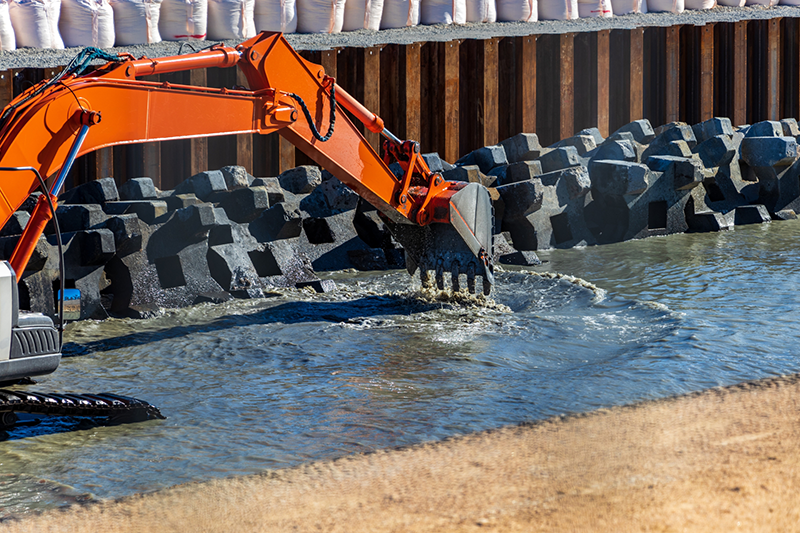
Various types of muddy water are generated from construction projects such as dams and tunnels, and from plants that extract gravel and crushed stone to produce aggregate.
Efficient treatment is necessary to reuse the generated muddy water on site or to discharge it into rivers.
These construction sites and production plants, which take place in a natural environment, require appropriate treatment of muddy water that does not affect the surrounding environment.
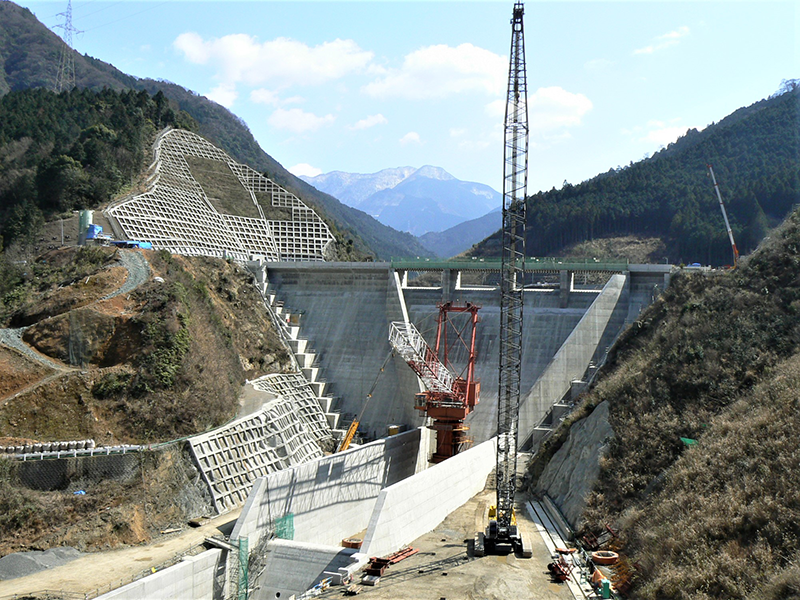
【Dam construction】
During the construction period, various types of muddy water (e.g., rainwater containing sediment during slope excavation, spring water during excavation of river beds and other areas, water for concrete washing and boring/grouting associated with concrete work, etc.) are generated.
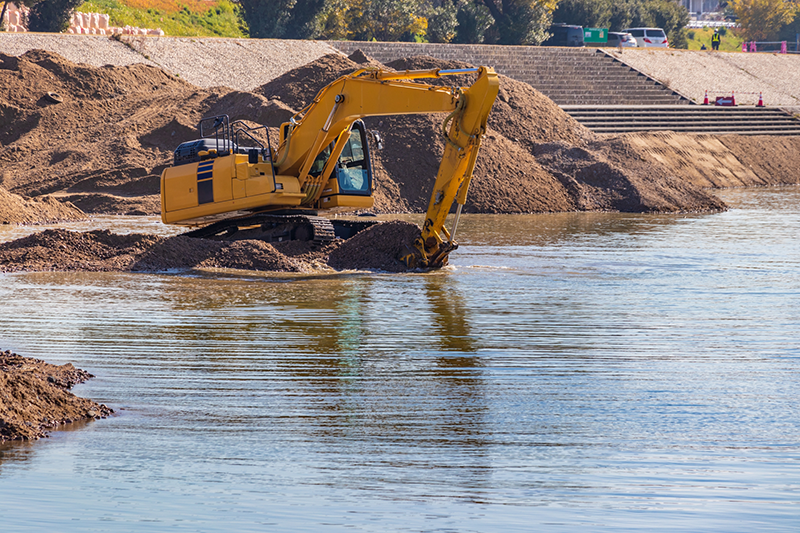
【Dredging】
Dredging is a method of mechanically pumping out sediment and sludge deposited in rivers, lakes, marshes, and ocean areas.
About 90% of the muddy water that can be pumped out by the dredging method is water.
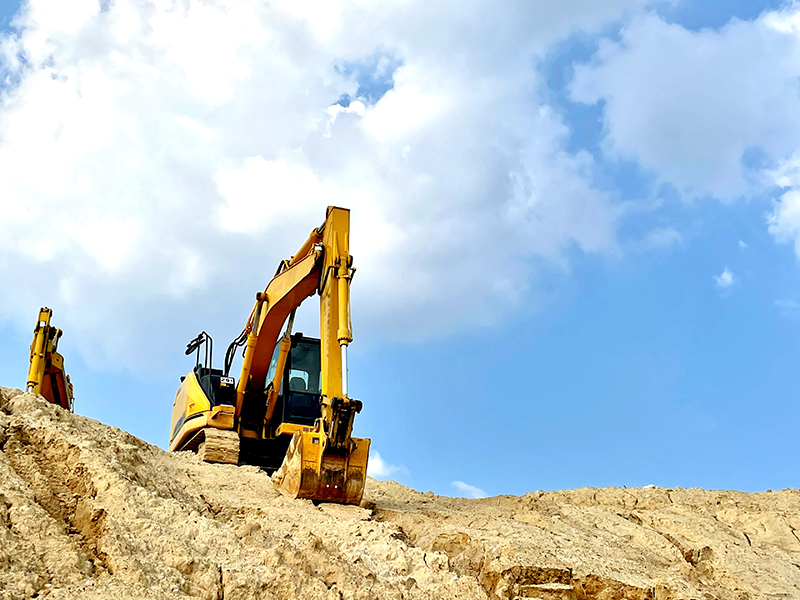
【Aggregate production plant】
Aggregate is sand or gravel that is used as the main material in making concrete or asphalt.
Aggregate can be natural, collected from riverbeds and mountains, or man-made, crushed from rocks.
After collection or crushing, the aggregate is washed with water to remove mud and other contaminants from the surface, and then sorted by particle size before shipping.
Wastewater treatment methods for civil engineering and dredging, etc.
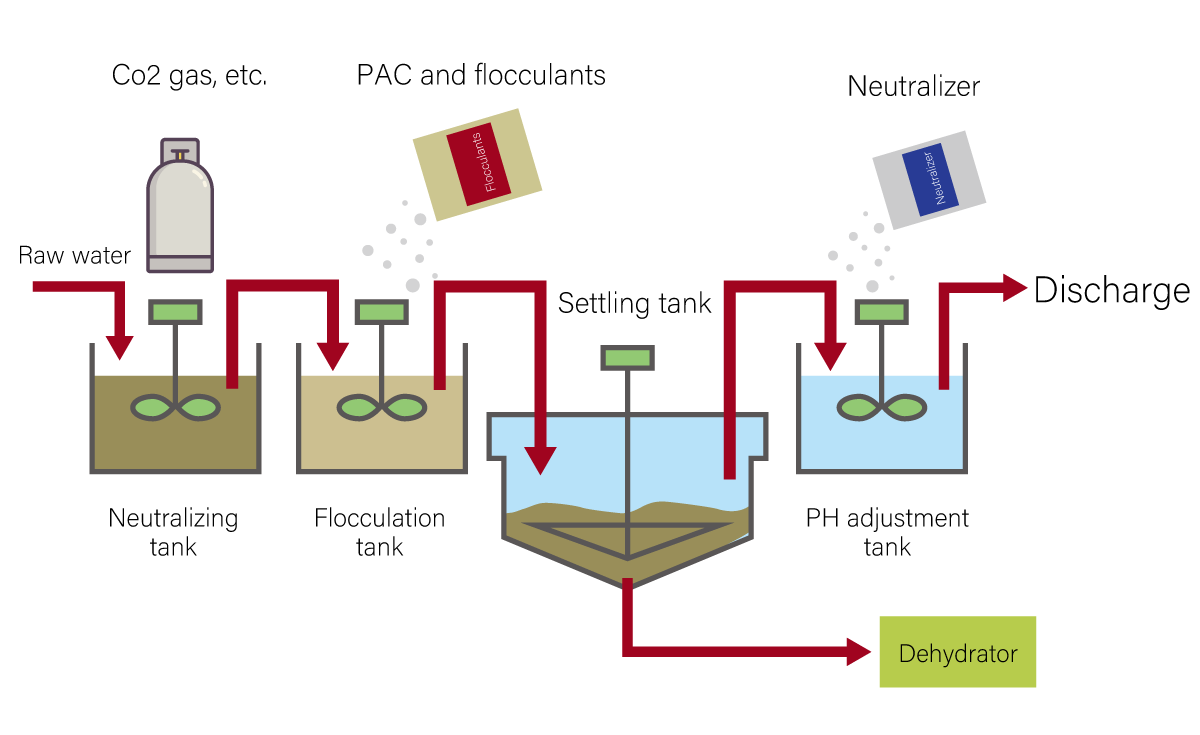
Use case
Muddy water generated from civil engineering works is inorganic wastewater with suspended fine particles such as clay minerals.
The chemicals used are mainly inorganic coagulants and polymer flocculants. Muddy water is separated by sedimentation in sedimentation tanks or thickeners, followed by solid-liquid separation in dewatering machines such as filter presses.
Dam construction
Muddy water is treated to reuse or discharge into rivers, therefore proper treatment is necessary.
Muddy water treatment facilities installed include sedimentation tanks, thickeners, and mechanical dehydrators, which must be properly treated using inorganic coagulants and polymer flocculants.
Dredging
Since approximately 90% of the muddy water pumped out by the dredging method is water, it is important to effectively separate the sediment and sludge from the water by solid-liquid separation.
Since a large amount of muddy water must be treated during dredging, it is necessary to remove the turbidity and treat it effectively and properly.
Aggregate production plant use case
Production plants require large amounts of cleaning water as well as large amounts of muddy water treatment, making water recovery and utilization essential.
Aggregate washing → muddy water from washing → sedimentation → dewatering → treated water → reuse



